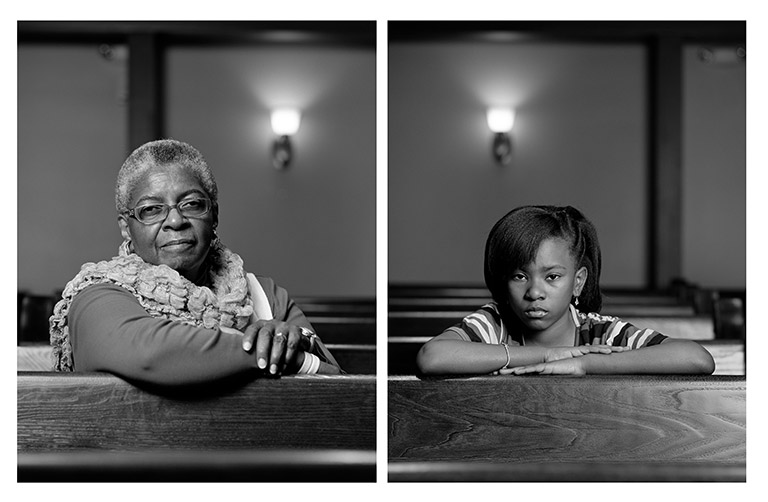 |
| Stitcher: Focal Point, Episode 3 |
Bey and Cole have both recently created exhibits by selecting from the archives of a museum (Dawoud Bey, Art Institute of Chicago, This Land Is Your Land and Teju Cole, Museum of Contemporary Photography, Go Down Moses). Go Down Moses is still at the MoCP (July 18 through September 29, 2019).
What to select?
Museums are powerful cultural forces. They honor our collective past and shape our future. Their power has received heightened attention, from the membership of their Boards of Directors, to their curators, to the works in the collection (and sales from that archive to fund new acquisitions as part of reshaping the collection), to a broader invitation to open their doors to the people of their local communities (yes, institutions and geographies are intersectional).
What to select is a core question of how we function as a society, the voices we bring into the conversation, and how we build from the diversity of our many cultures. We are the same humans with very different personal and communal histories, and with structural imbalances of power and wealth.
What is in the archive?How does the archive reflect the bias of the institution?How are decisions made about what is art and what (and who) is worthy of our attention?
It is the challenge of our 21st Century lives. Where do we put our attention? What do we select from the endless options all around us? How does that selection process shape our future?
Personal and Specific
Where does my attention land? What am I drawn to, repulsed by or breeze by? This is a personal question, a personal experience. The answers are personal.
How do I, how does each of us, respond to a photograph, whether one we make or one we come across?
How do I, how does each of us, respond to a photograph, whether one we make or one we come across?
"Certain pictures that hit you right between the eyes""A photo I wish I had taken"
Bey and Cole express their own humility in making photographs, that a photographer might only make one picture which really touches us, perhaps the best make a dozen in their lifetime that hit that mark. A reminder for those of us who are working to photograph in ways that have a deep resonance for ourselves and others. Patience. Nurturing. Curiosity. Open to the magic.
Grace Note
Early in the podcast, they discuss the grace note of Go Down Moses, Roy DeCarava's Man in Window. |
| Roy DeCarava, Man in Window (1978) |
 |
| Larry Wolf, MoCP Wall of Images (2019) |
I'm glad I went back a second time and started at the end.
In a world that is full of bold colors, high contrast, brighter than bright attention grabbing moments, it is very refreshing to simply stop and look. To let the graphic elements float in front of me. To see the image as light and dark, loose and tight patterns, associated ideas and direct observation.
A few of the photographs in Go Down Moses are similarly mostly black. They seem to be punctuation points in the exhibit. Stopping my eye as I scan the wall. Causing me to pause and look closer, closer at that one image and more closely at the images they are grouped with.
"Tension in the interpretation of what you are seeing."
"Public, social and quietly intimate"
http://www.mocp.org/detail.php?t=objects&type=browse&f=maker&s=Bey%2C+Dawoud&record=53
"It is designed to make a still image of a moment. How do you make something about an extended period of time?"
 |
| Larry Wolf, MoCP Last Image (2019) |
In a world that is full of bold colors, high contrast, brighter than bright attention grabbing moments, it is very refreshing to simply stop and look. To let the graphic elements float in front of me. To see the image as light and dark, loose and tight patterns, associated ideas and direct observation.
A few of the photographs in Go Down Moses are similarly mostly black. They seem to be punctuation points in the exhibit. Stopping my eye as I scan the wall. Causing me to pause and look closer, closer at that one image and more closely at the images they are grouped with.
Tenderness combined with strangeness
 |
| Gordon Parks, Young Boy Standing in in the doorway of his home on Seaton Road in the northwest section. His leg was cut off by a streetcar while he was playing in the street (1942) |
The photographer looking
"Locations retain the ghosts of things that happened there""Public, social and quietly intimate"
http://www.mocp.org/detail.php?t=objects&type=browse&f=maker&s=Bey%2C+Dawoud&record=53
How does one visualize the passing of time?
"How do you do the thing with a camera that photography is designed to not do?"
 |
| Dawoud Bey, Mary Parker and Caela Cowan (2012) |
 |
| Dawoud Bey, Michael-Anthony Allen and George Washington (2012) |
"It is designed to make a still image of a moment. How do you make something about an extended period of time?"
In these photographs Bey pairs two life-size portraits representing the victims of the 16th Street Baptist Church bombing and related violence in Birmingham that Sunday in 1963: one portrait of a young person the same age as one of the victims, and another of an adult 50 years older—the child's age had he or she survived. [Press release from the exhibit at the National Gallery of Art, September 12, 2018 through April 22, 2019]
This exhibit was also at the MoCP, April 11 through July 7, 2019.
Life at its best
"I know I'm at my truest and best self when everything is in conversation and I don't have to make declarations of any kind of purity."
"If I did believe in god, god would be against any kind of purity and isolation because we are all in this together."

No comments:
Post a Comment